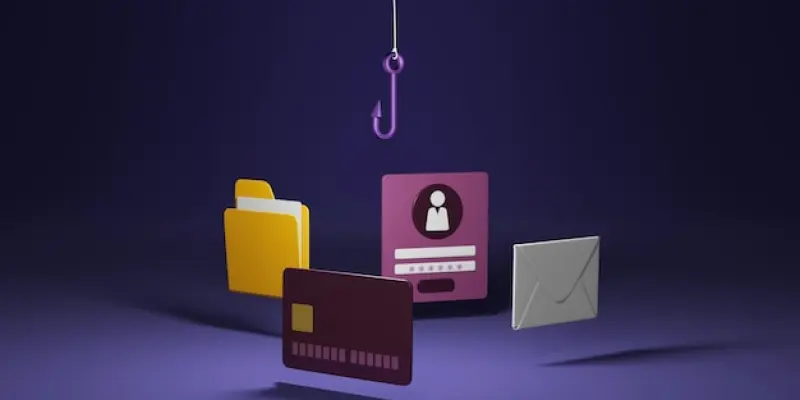In the ever-evolving landscape of cybersecurity, phishing has long been known as a primary method for hackers to gain initial access to systems. However, recent data suggests that the effectiveness of phishing attacks may be diminishing. According to Mandiant’s M-Trends Report, phishing as an entry method has seen a notable decrease, dropping from 22% to 14% over recent years. While this decline might seem like a positive development for cybersecurity, the report also highlights a shift towards other, potentially more damaging, methods of initial access, such as vulnerability exploitation and credential theft.
Shift to Vulnerability Exploitation and Credential Theft
Vulnerability exploitation has emerged as a leading method for initial access in cyber-attacks, accounting for 33% of cases. Despite a slight decline from 38% in the previous year, it remains a significant threat. This method involves attackers taking advantage of unpatched software flaws to breach systems. Hackers are increasingly sophisticated in identifying and exploiting these vulnerabilities, often faster than organizations can address them. At the same time, credential theft has been on the rise, increasing from 10% to 16%. This trend is attributed to the enhanced capabilities of threat actors in acquiring credentials through various means. These methods include purchasing credentials from underground forums, mining data from large breaches, and deploying keyloggers and infostealers. These tools gather extensive data from infected systems, offering a treasure trove of information that can be used for subsequent attacks.
The transition from phishing to stolen credentials suggests a strategic shift among hackers. Credential theft allows for quieter, more prolonged access to target systems. Unlike phishing, which requires tricking users into divulging information, stolen credentials can be seamlessly used to infiltrate networks undetected. This evolution in tactics underscores the need for robust authentication methods and continuous monitoring to detect unusual access patterns.
The Role of Infostealers and Increased Insider Threats
Infostealers present a unique challenge as they can gather extensive user data and credentials from a single system. Unlike more targeted attacks like phishing or credential stuffing, infostealers can exfiltrate a wide range of information. The report highlights several prominent infostealer variants, including Vidar, Resepro, Redline, Raccoon stealer, Lumma, and Metastealer. These tools are particularly effective in compromising credentials, which can then be sold or used in further attacks.
A notable instance mentioned in the report involved Snowflake customers. Their credentials were compromised through infostealer malware present on employees’ and contractors’ devices. This incident illustrates the widespread impact that infostealers can have, especially when deployed within organizations managing sensitive data. Another emerging threat is the rise of insider attacks. The report notes that fraudulent North Korean IT worker campaigns have contributed to 5% of initial access vectors. Insider threats are particularly dangerous as they involve individuals who already have legitimate access to an organization’s systems. These insiders can leverage their positions to exfiltrate data or introduce malware, often bypassing traditional security measures.
Phishing’s Continued Prominence in Cloud Environments
Despite its overall decline, phishing remains a primary initial access vector in cloud environments. The Mandiant report indicates that phishing was responsible for 39% of cloud-related compromises. This persistence is partly due to the rapid adoption of cloud technologies, which often outpaces the implementation of robust security measures. In cloud environments, attackers exploit the reliance on email and web-based services to conduct phishing campaigns. The report underscores the importance of adopting Anti-Phishing Technologies Resistant Multifactor Authentication (AiTM-resistant MFA) methods to safeguard cloud accounts. Hardware security keys and mobile authenticator apps are recommended over traditional SMS-based MFA, which can be vulnerable to SIM swapping and voice phishing attacks.
Data theft remains the primary objective in 66% of cloud attacks. Hackers target sensitive information stored in the cloud, which can be monetized or used for further cyber espionage. As businesses continue to migrate to cloud platforms, securing these environments against phishing and other cyber threats becomes increasingly critical.
Financial Motivations and Targeted Industries
Financial motivations continue to drive a majority of cyber threats, with 55% of threat groups pursuing financial gains. This figure reflects an increase from previous years, indicating a growing trend towards financially motivated cybercrime. The rise in financial incentives aligns with the proliferation of ransomware and data extortion schemes, which offer lucrative returns for successful cybercriminals.
Espionage-motivated threat actors have seen a slight decrease, now comprising 8% of cyber threats. However, they remain a significant concern, particularly for industries handling sensitive information. The financial industry is the most targeted, accounting for 17.4% of attacks. Following closely are business services (11.1%), high tech (10.6%), government (9.5%), and healthcare (9.3%). These sectors continue to be prime targets due to the valuable data they possess and their critical roles within society. The evolving cyber threat landscape underscores the necessity for constant vigilance and adaptation in cybersecurity strategies. As hackers adopt new techniques and shift their focus, organizations must remain proactive in employing advanced security measures and educating their workforce about emerging threats.
Concluding Insights on Cybersecurity Evolution
In the always-changing world of cybersecurity, phishing has been a well-known method for hackers to gain initial access to systems. However, recent findings suggest that the effectiveness of phishing attacks may be weakening. According to Mandiant’s M-Trends Report, phishing as an entry method has experienced a marked decrease, dropping from 22% to 14% over the past few years. This decline might initially strike as a positive step for cybersecurity defenses, but the report also points out an unsettling shift towards other, possibly more destructive, methods of initial access. These methods include vulnerability exploitation and credential theft, both of which can cause significant harm. While phishing may have been the go-to strategy for a long time, the focus has now moved towards exploiting software flaws and stealing user credentials, indicating that cybercriminals are adapting their tactics to bypass strengthened defenses. Thus, the landscape continues to evolve, emphasizing the need for robust, multifaceted cybersecurity measures.

